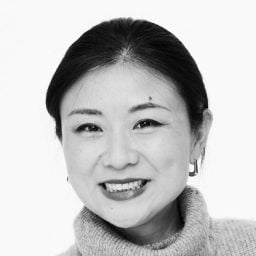Art World
Collector Chong Zhou Makes the Rounds at Art Basel Hong Kong. We Tagged Along.
Chong Zhou, the 35-year-old founder of ArTy ReTro has a discerning eye and broad tastes. He's been collecting for 15 years.
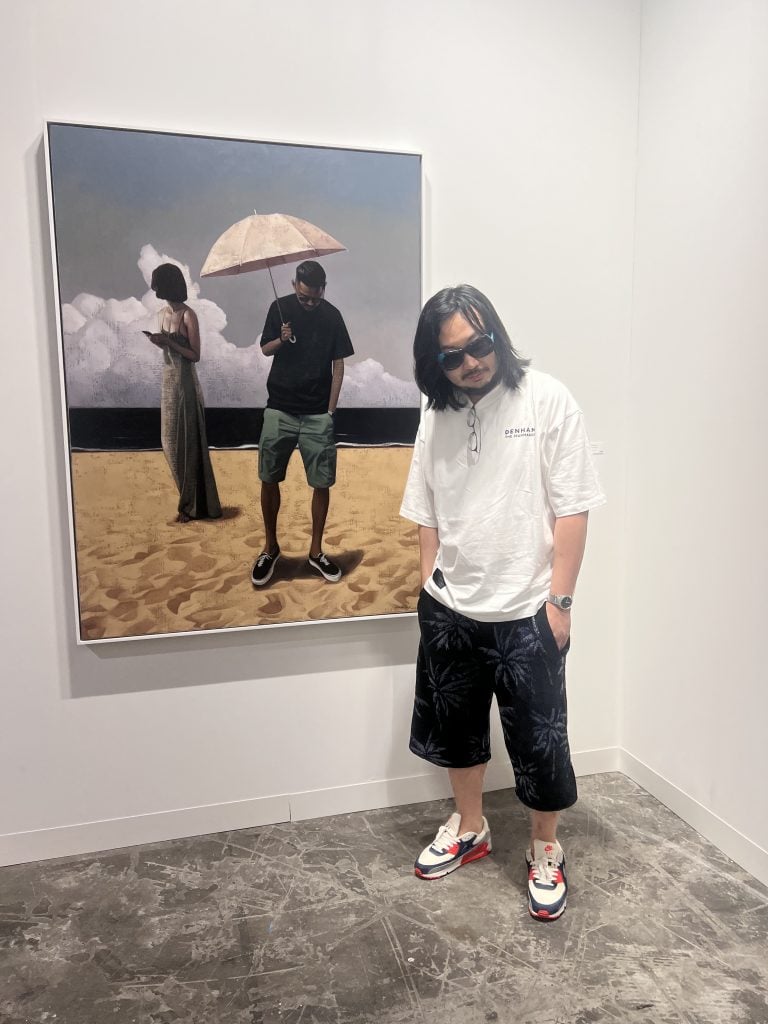
“Some of my social followers might join us on this fair walk,” Chong Zhou, the young Chinese art collector, revealed as we inched through traffic towards Art Basel Hong Kong. Chong skillfully instructed the taxi driver to turn off onto a side street and take a shortcut. A native of Shanghai, he occasionally took calls in Cantonese. He’s also fluent in English, and speaks some Japanese. He’s also well-acquainted with several global cities known for their art fairs.
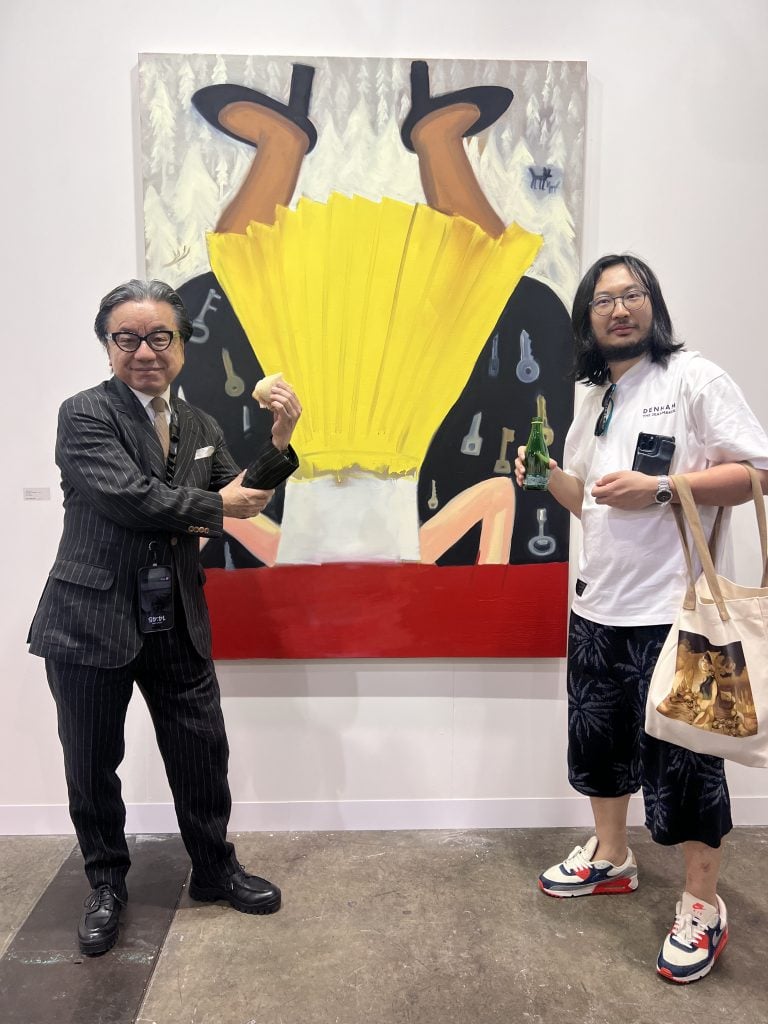
Chong Zhou with Ota Hidenori, Founder of Ota Fine Art, in front of Maria Farrar’s Lost keys to everything, 2024
“Many are unaware that I majored in art history at UCLA, so I was trained formally and systematically,” he shared with a chuckle. Chong is 35 and has been collecting for 15 years already. Like many young Chinese collectors, the family influence was significant. “A Zeng Fanzhi piece started my mother’s collecting,” he noted. In 2020, Chong launched ArTy ReTro, a brand that specializes in limited edition art-inspired toy collectibles. The debut collaboration was with Zeng Fanzhi.
Chong’s collection has grown to over 600 pieces. He opened a non-profit art space in a charming historic Shanghai mansion, the 1690 Art Collection Space, rotating four exhibitions a year, aiming to “set a trend in art collecting.” For Zhou, managing social media, brand collaborations, and the art space are part of his lifestyle and attitude.
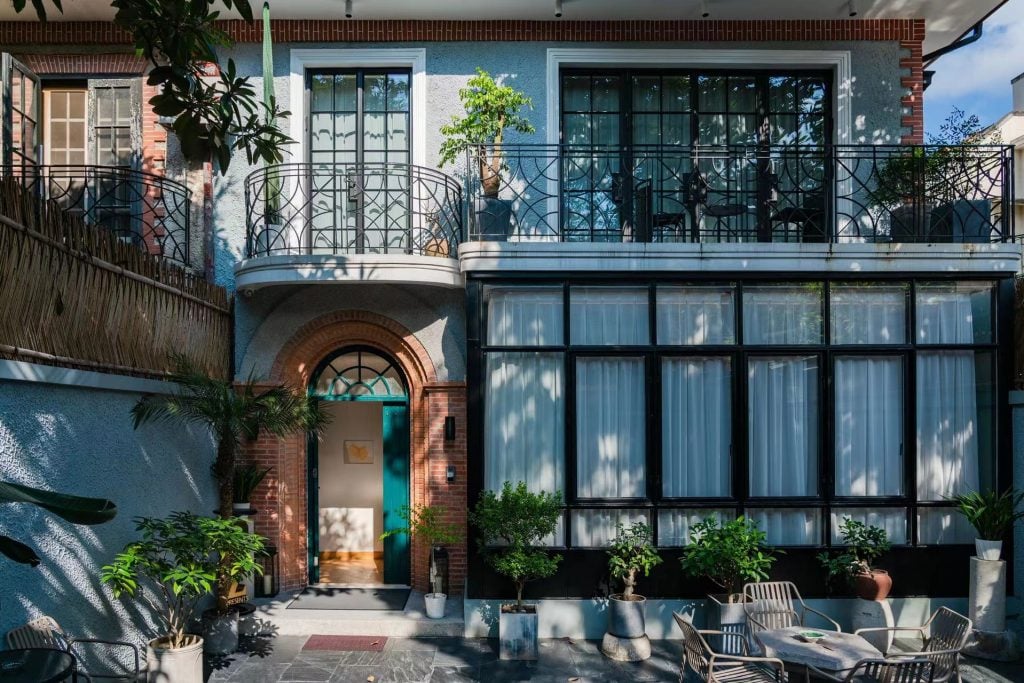
1690 Art Collection Space. Courtesy of 1690 Art Collection Spae.
We were not the earliest birds on the first day of the fair. By the time we arrived, the venue was bustling, with a significant portion of the attendees speaking Mandarin, alongside many Korean speakers. Chong, an early attendee of Art Basel Hong Kong, noted, “It’s now seen as a lifestyle, attracting audiences beyond the core art world circle.”
The fair experienced Chong shared his strategy: first, he would visit a few key booths to see the works he was interested in from the PDFs he studied beforehand; then, he would “do a second round” to make sure he didn’t miss anything.
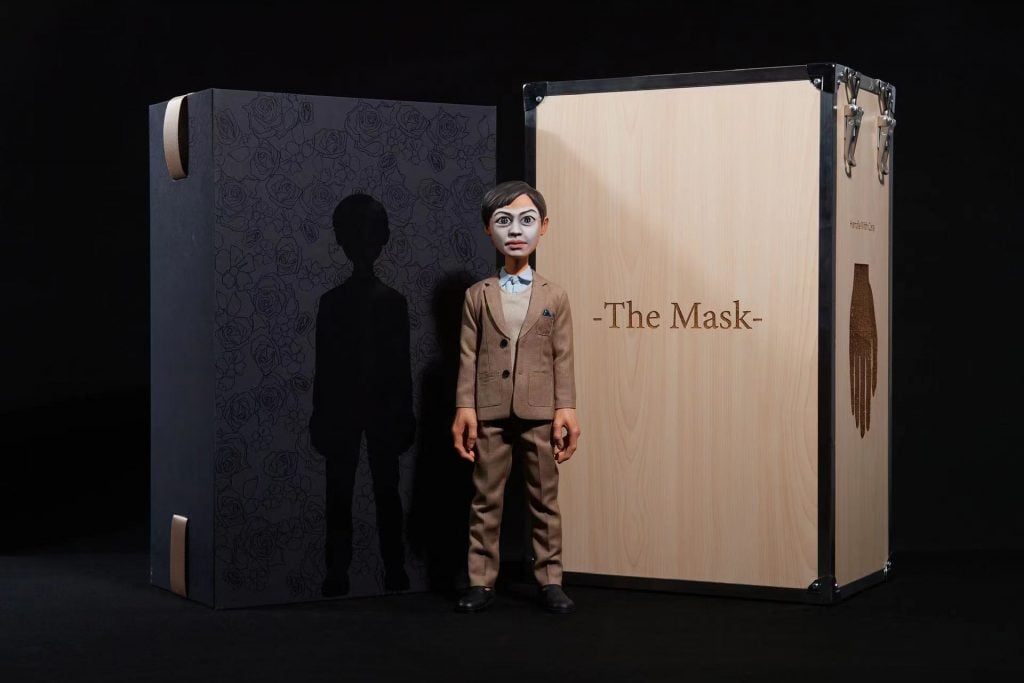
ArTy ReTro x Zeng Fanzhi “Mask Series”
I soon realized that I underestimated Chong’s efficiency and pace as soon as we entered the venue that I had to jog to keep up with him. He briefly paused at the entrance’s floor map, then confidently strode towards the first booth, where Taka Ishii Gallery’s founder greeted him warmly. Over the next few hours, our walk was filled with greetings and salutations from different galleries and friends.
At Beijing’s Platform China Contemporary Art Institute’s booth, Chong felt at home. He immediately focused on a work by the artist Zhang Yexing, clearly already familiar with the work. “It depicts a melancholic farewell,” he noted and mimicked the figures’ poses and asked for a photo with the artwork.
Soon, my “tag along with a collector” walk was joined by more of Chong’s acolytes. Three young ladies told me that they all had been dipping their toes into art collecting for a few years, now drawn by Chong’s unique approach to collecting and wanting to learn more. So, our expanded group, led by Zhou’s brisk pace, entered another native Chinese gallery, the Hive Center for Contemporary Art.
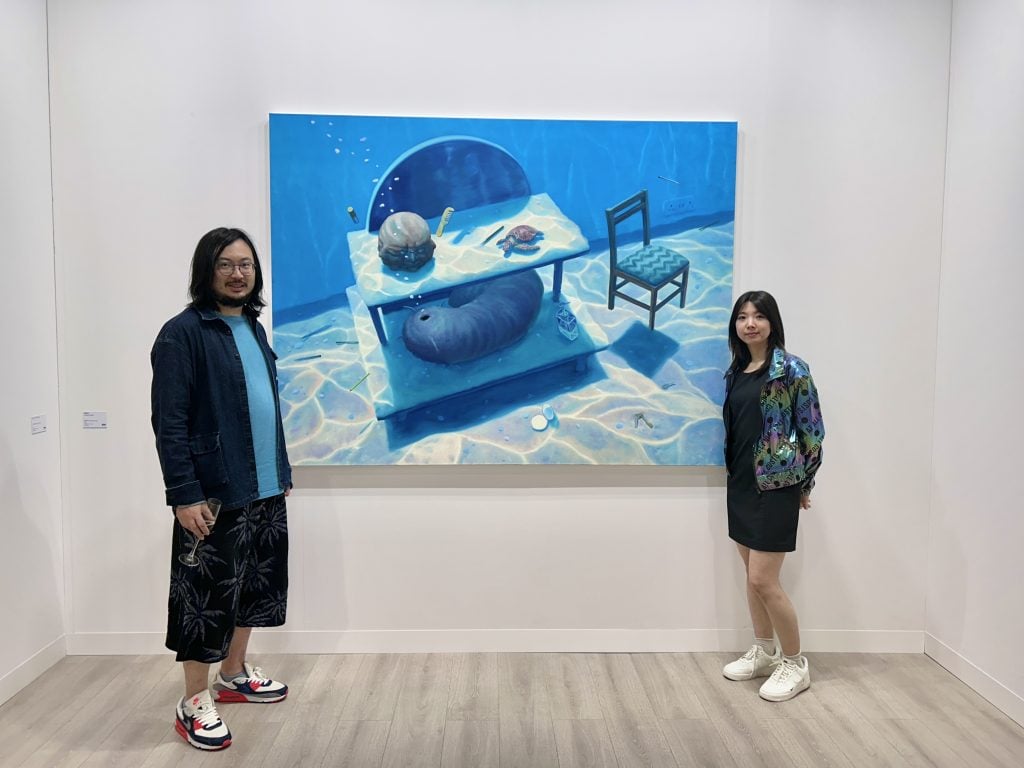
Chong Zhou with Minyoung Choi at Hive Center for Contemporary Art’s booth
“Hive is probably the most energetic gallery for contemporary art in China right now, especially in its exploration of young Chinese artists in recent years,” Chong emphasized to me, and insisted that this portion be included in the article. He mentioned several artists under 40 who are current market favorites: Ji Xin, Xia Yu and Zhang Yingnan. Zhou began to introduce some of the artists’ backgrounds in detail to his followers, and gallery owner Xia Jifeng cheerfully handed over the “stage” to him, “His professionalism and dedication are comparable to that of gallery staff.”
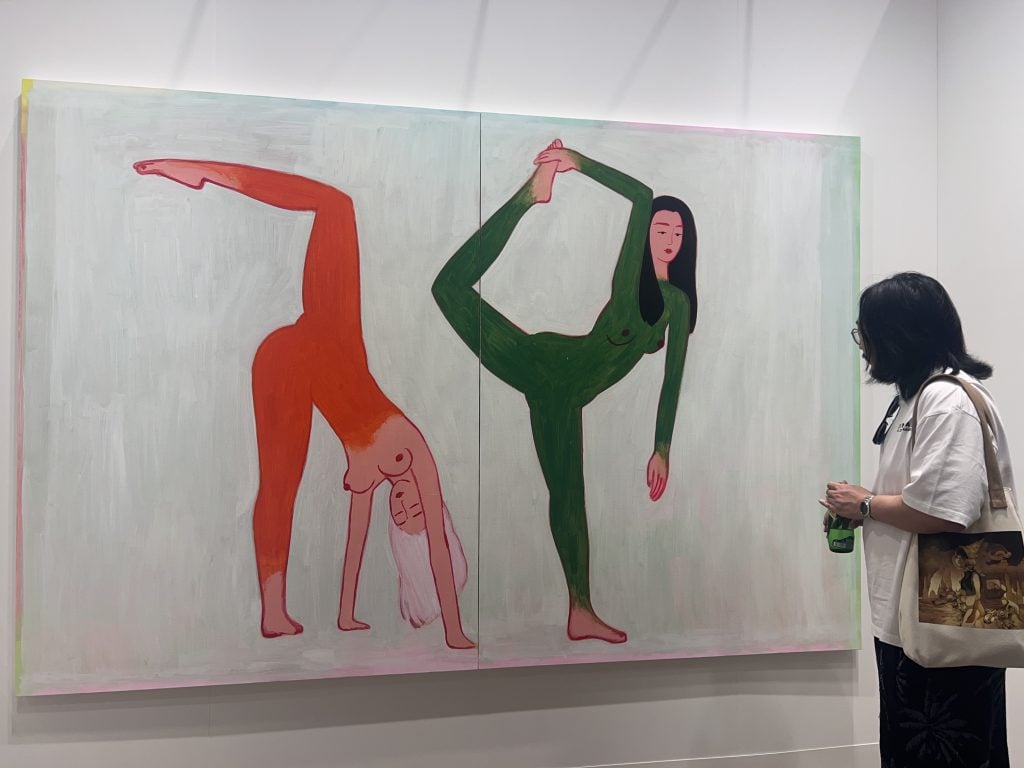
Chong Zhou with Zhang Hui’s Standing Woman No.66 at Star Gallery. Photo: Cathy Fan
Chong said his art projects and local Chinese galleries have a deep connection, exploring how to better support the growth of young Chinese artists. Additionally, he has a very clear collecting thread for female artists. His 1690 Art Collection Space is currently presenting a group show “Promenade” of women artists from around the world.
At the Peres Projects’ booth, he admired the work of Donna Huanca, one of the artists he is focusing on collecting. This artist’s performative paintings explore a wide range of gender and identity concepts. Chong revealed that he has collected a Huanca triptych, and the piece on display, though not very large, was priced around $55,000.
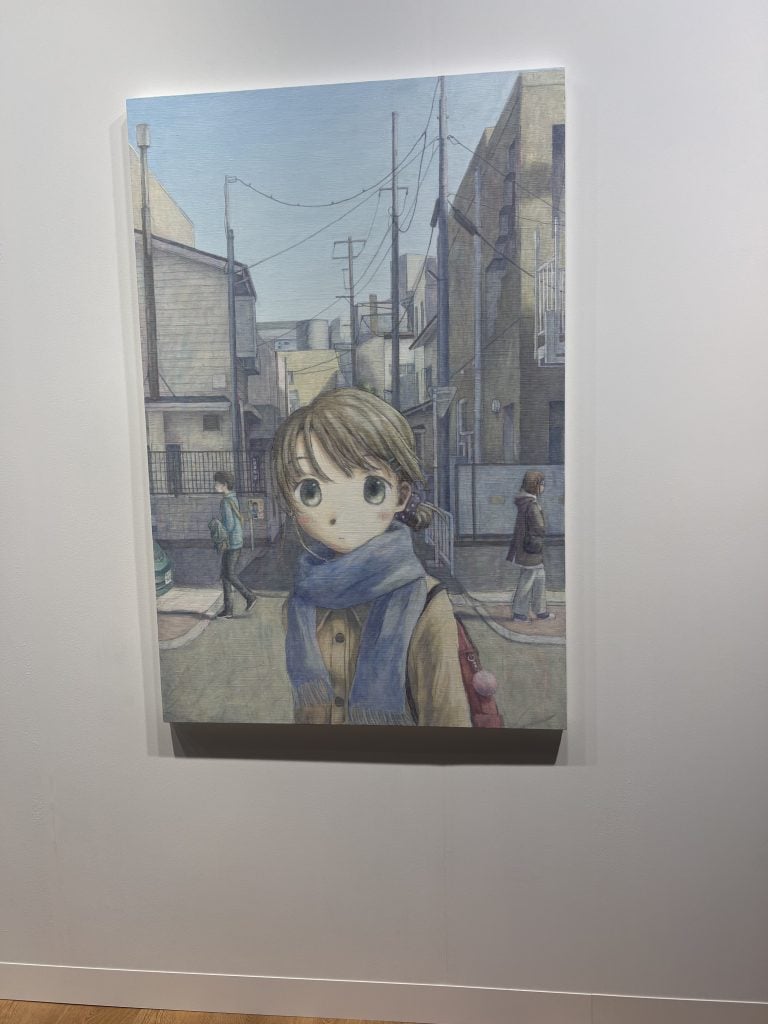
Emi Kuraya’s Untitled, 2024 at Perrotin’s booth. Photo: Cathy Fan
Entering Perrotin’s booth, Chong pointed out artist Emi Kuraya. A work created in 2024 on display there resonated with him. “Her works have a very delicate manga style, combined with an aesthetic of everyday Japanese scenes,”he said. “All of these are connected to anime. It’s very healing and resonates emotionally with me,” Zhou added, “Emotional connection is essential for collectors.”
Chong’s fondness for Japanese culture is evident, like many of his fellow young collectors. In fact, his first collection piece was bought fifteen years ago, a high starting point: a Yayoi Kusama painting purchased from Ota Fine Arts.
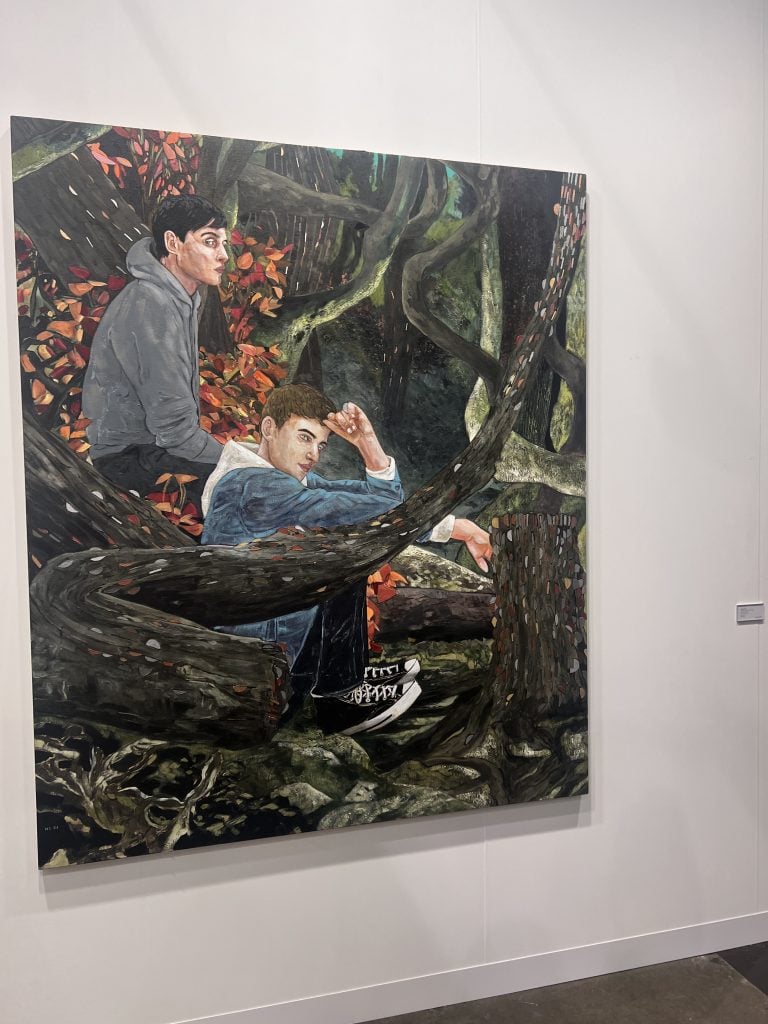
Hernan Bas’s The Coin Tree Grove, 2021 at Victoria Miro. Photo: Cathy Fan
Our group of five entered Victoria Miro’s booth and were thrilled to find a Kusama mirror room. The gallery informed us that the piece had been sold to an institution in Mexico for $5 million. Chong saw a secondary market piece by Hernan Bas, priced at $775,000. “Hernan Bas is my all-time favorite artist,” Chong told me.
Reflecting on missed opportunities, Chong mentioned Atsushi Kaga, whose work had significantly appreciated in value. This artist was in the spotlight at the fair and was displayed prominently by two galleries (Mother’s Tankstation and Maho Koubata Gallery) with his kawaii artwork featuring signature bunnies and a group of cats. The content combined his life experiences in Japan and Europe with Eastern and Western elements. In the “Encounters” section for large installations, the artist had set up a small Kabuki theatre stage. Zhou mentioned that when he first encountered this artist, the price was merely $10,000, but now it has increased more than fivefold. Zhou posed for a photo in front of the installation. “The lesson is that it is crucial to trust your taste without overthinking the trend of other’s thoughts,” he concluded.
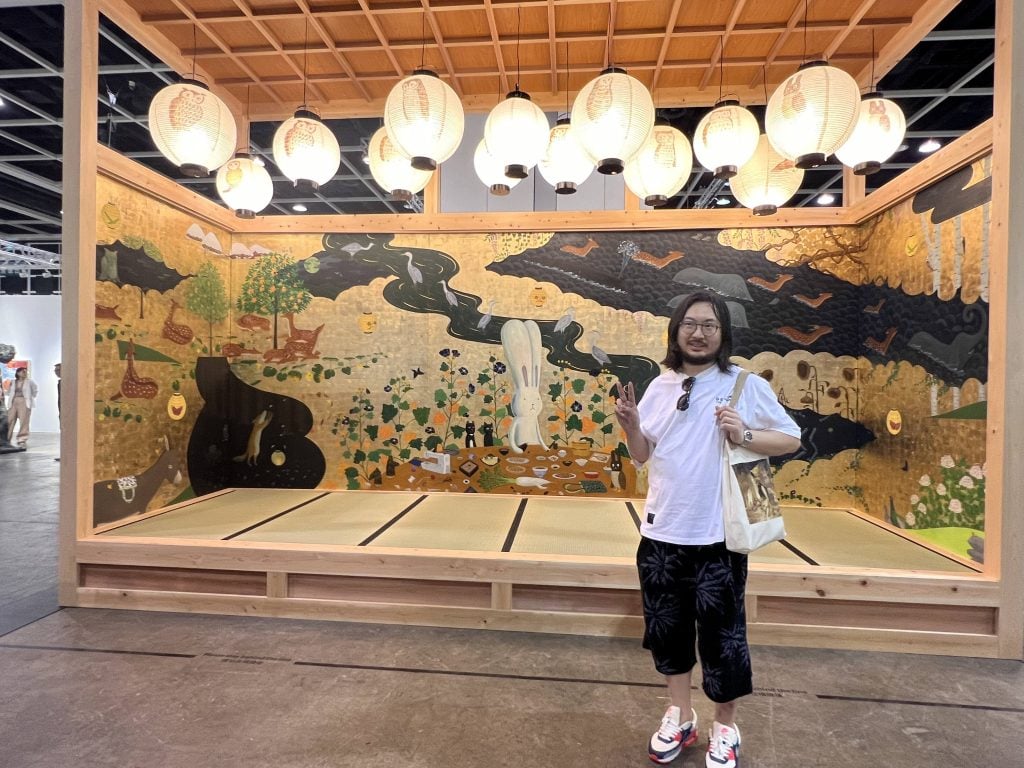
Chong in front of Atsushi Kaga’s large installation at Encounter. Photo: Cathy Fan
After a quick sandwich, we moved to the second floor. “This level feels a bit more ‘old money’ to me. I’m slightly less interested in the older pieces,” Chong told me very decisively, saying he wouldn’t be visiting the galleries in the far right area at the moment. Among these were galleries like Acquavella and Waddington Custot.
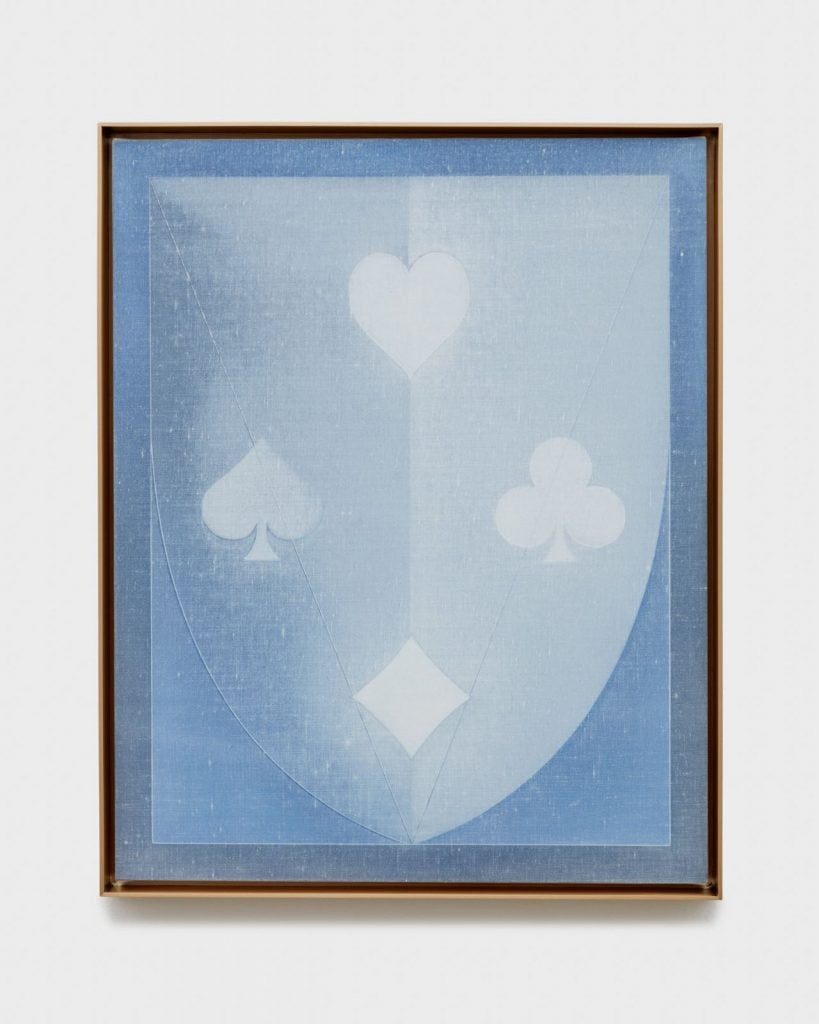
Theodora Allen, Shield (Equanimity), 2023. Kasmin Gallery
He headed straight for Kasmin’s booth. Chong said he not only collected works by Theodora Allen, an artist represented by the gallery but had also hosted her project in his space. There happened to be a small piece by Allen at the booth, and after the gallery staff’s introduction, Chong mentioned to me that Lari Pittman, whose works we had seen at Lehman Maupin’s booth earlier, was Allen’s teacher.
Leaving the booth, he shared with the gallery staff that he would be lending Allen’s work to the Museum of Contemporary Art in Yinchuan, China, for a group exhibition.
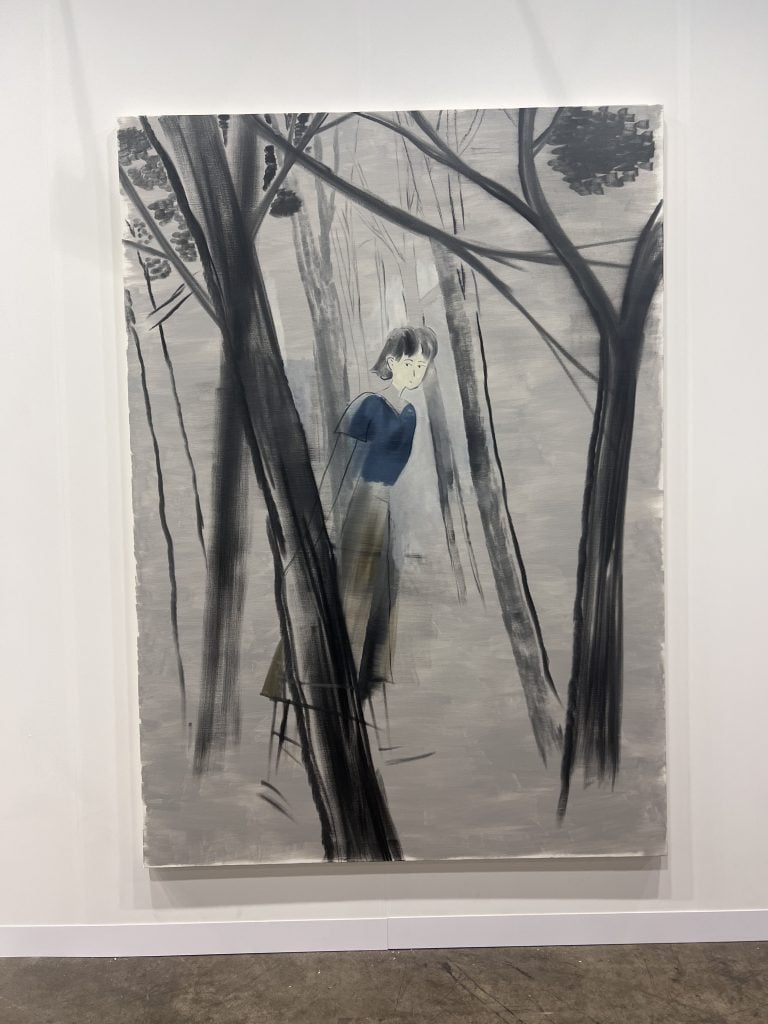
Yu Nishimura at Crèvecœur. Photo: Cathy Fan
As our visit neared its end, Chong found his highlight of this fair at the booth of Paris’s gallery Crèvecœur — three works by Japanese artist Yu Nishimura (b.1982), especially a large oil painting depicting a girl walking through woods, serene yet slightly melancholic. Chong was excited, saying it reminded him of Chinese literati painting, with ink-like brushstrokes in the oil painting, relaxed and airy. The gallery revealed the painting had already attracted multiple inquiries. Chong left his contact information with the staff, still reminiscing as we stepped out, “I think for galleries, both Eastern and Western, finding the best meaning in their exchanges, and reaching a consensus in aesthetics, is a good thing. But finding this sense of consensus is really not easy.”
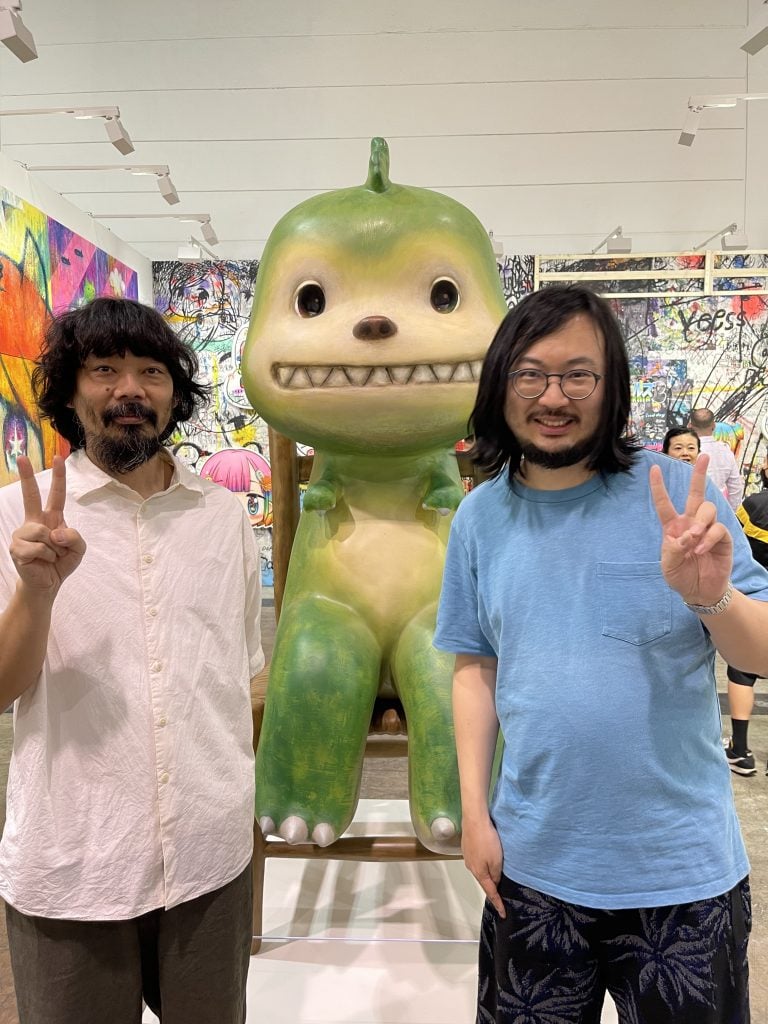
On Chong’s second day at the fair, he met with Otani Shigeru(Otani Studio), Tanilla, Kaikaikiki
After waving goodbye to Chong, he dived back into the fair for a second, more detailed viewing. The next day, he returned once again to Art Basel Hong Kong, and later he messaged me his overall reflections: “Hong Kong’s position as a trading center for art is unshakable, with the scale and popularity feeling like it has returned to the levels of 2019. Overall, each gallery seems to be seeking a strategy of steady progress, with the more aggressive part being how to introduce emerging artists.” Meanwhile, he shared “top 10 selections” from the fair on his social media, continuing to engage and influence his followers.

